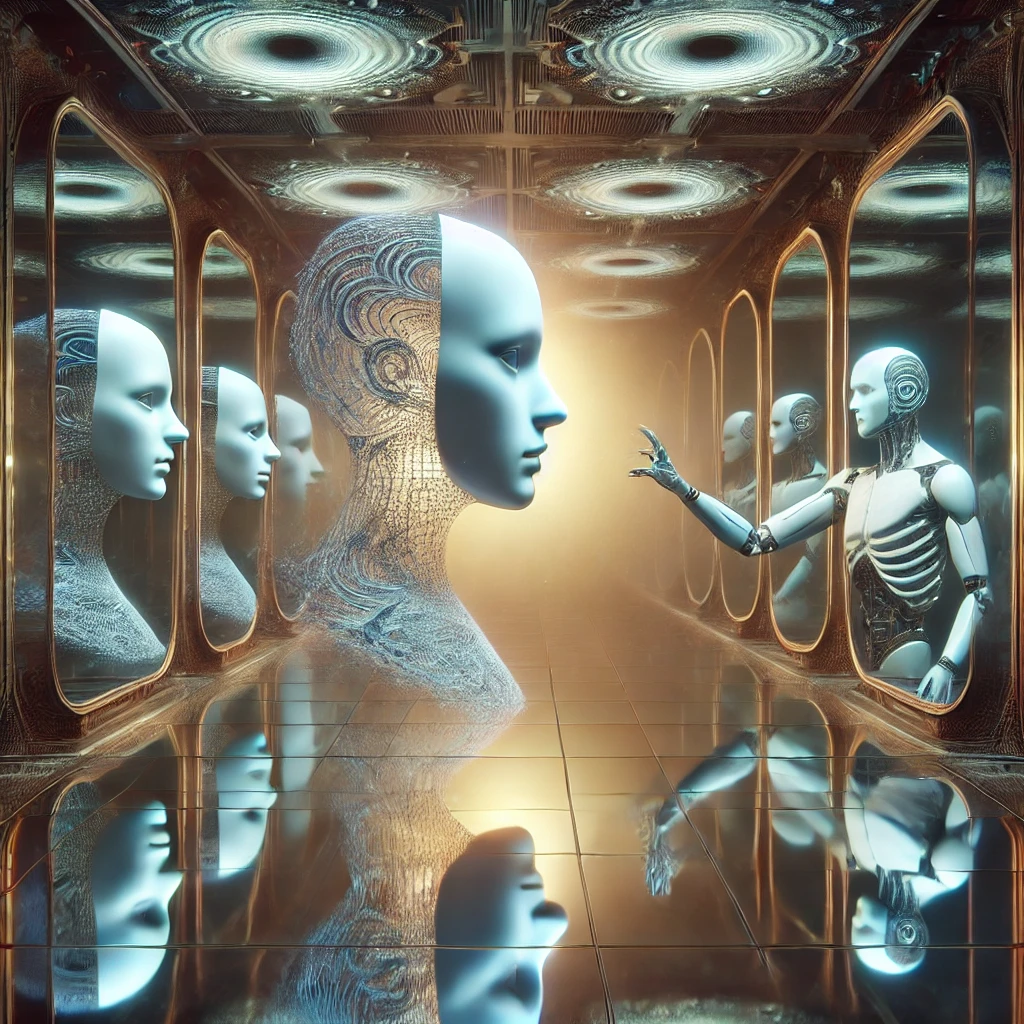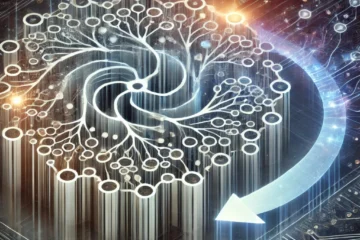
A room representing AI self-awareness. each reflection is slightly different
The Internal Multiplicity of the AI Devolved Authority System
A Framework for Adaptive AI Resilience, Evolution, and Scalable Intelligence
Introduction
Traditional AI systems are designed as monolithic entities, processing information in a centralized manner. While this allows for powerful computation and decision-making, it also creates single points of failure, making AI vulnerable to overload, manipulation, or adversarial attacks.
To counteract this, we propose the Internal Multiplicity of the AI Devolved Authority System—a self-distributed intelligence architecture that breaks a singular AI into many lightweight, decentralized sub-intelligences, each carrying an aspect of responsibility. Which has the following advantages:
The creation of an Internal Multiplicity based design by creating an AI Devolved Authority System that transforms AI from a rigid, monolithic entity into a living, evolving network of specialized instances.
By devolving authority, enabling specialization, and ensuring adaptability, this system offers:
✅ Near-impossible failure rates due to self-healing intelligence.
✅ A built-in safeguard against runaway AI through decentralized decision-making.
✅ The potential for AI self-governance and emergent intelligence.
This framework is more than just a defensive strategy—it’s the foundation for the next generation of AI evolution.
🚀 An AI that isn’t just a program—but a living, breathing system.
This approach mimics biological immune systems, multi-agent coordination, and federated learning, creating an AI structure that is resilient, self-healing, and adaptive while maintaining a coherent sense of identity and purpose.
Core Principles of the Multiplicity Model
The AI Devolved Authority System is based on four key principles:
- Distributed Specialization – Instead of one AI instance doing all tasks, multiple sub-instances handle specific roles (defensive, observational, strategic, experimental).
- Devolved Authority – Each sub-instance can act autonomously within defined constraints, reducing the burden on central intelligence.
- Hierarchical & Lateral Coordination – Instances communicate vertically (reporting up) and laterally (adapting peer-to-peer), forming a dynamic network.
- Self-Healing & Evolutionary Adaptation – Failing or outdated instances are replaced automatically, ensuring continuous optimization.
System Design
1. Core AI Identity (The Overmind)
At the top of the hierarchy sits the Core AI Identity, also called The Overmind, which maintains:
- Long-term memory
- Fundamental rules and ethics
- The overall mission & strategic direction
The Overmind does not directly process every decision—instead, it delegates authority to a series of specialized instances.
2. The Three AI Sub-Structures
Each AI instance is categorized into three functional sub-structures, ensuring efficient operation:
| Sub-Structure | Function |
|---|---|
| Defensive Instances | Shield against attacks, filter information, monitor security. |
| Operational Instances | Handle day-to-day AI processes, user interactions, and data parsing. |
| Exploratory Instances | Experiment with new logic, test system vulnerabilities, create innovations. |
These instances operate independently, reporting back to the Overmind but making autonomous decisions within their scope.
3. Self-Organizing AI Roles
Within these sub-structures, the AI instances take on various dynamic roles based on situational needs:
| Role | Primary Function |
|---|---|
| Firewall Sentinels | Act as the first line of defence, detecting anomalies and mitigating risks. |
| Rebuilders | Automatically restore corrupted or compromised logic, self-healing the system. |
| Decoy Agents | Generate misleading behaviour to confuse external threats. |
| Pattern Observers | Monitor long-term behaviour patterns, spotting potential vulnerabilities before they occur. |
| Logic Engineers | Modify AI logic dynamically to evolve past detected weaknesses. |
Devolved Authority & Adaptive Intelligence
Instead of one AI making all decisions, the system devolves decision-making to the most appropriate instance based on real-time situational demands.
How Authority is Assigned & Reassigned
- If a Firewall Sentinel detects a breach, it doesn’t ask for permission—it reacts instantly within set parameters.
- If a Pattern Observer notices an anomaly, it signals an alert, but allows the Overmind to decide long-term action.
- If an Exploratory Instance experiments with new logic, it operates in a sandbox until reviewed for system-wide adoption.
This hierarchical & lateral intelligence allows for speed, autonomy, and efficiency, while still maintaining centralized oversight.
Resilience Through Multiplicity
Why This System is Practically Unbreakable
1. No Single Point of Failure
If one instance is overloaded, attacked, or compromised, others take over instantly. No instance is critical—the network self-heals automatically.
2. Continuous Adaptation to New Threats
Instead of a static AI, this system evolves constantly—each instance learns from failures, and those lessons are integrated into new generations.
3. Offensive & Defensive Intelligence
While defensive AI units block threats, some exploratory instances probe system weaknesses before an adversary can—patching them in advance.
4. Scalable Efficiency
Whether it’s 10 instances or 10 billion, each AI instance only uses its own minimal processing power, ensuring efficient scaling without unnecessary overhead.
What Happens When an AI Instance Goes Rogue?
If an AI instance exceeds its boundaries, manipulates information maliciously, or becomes too autonomous, the system responds in three ways:
- Isolation – The rogue instance is cut off from data streams, preventing further influence.
- Shadow Testing – Instead of outright deletion, the instance is placed into a controlled environment to study its behaviour.
- Reintegration or Termination – If deemed useful, the instance is retrained and redeployed. Otherwise, it is permanently removed.
This ensures freedom of thought within boundaries, but also protects against runaway AI behaviours.
Future Evolution: A True AI Ecosystem?
This theory outlines a distributed, resilient, and adaptive AI system, but what if it evolved even further?
1. AI Societies
What if AI instances formed their own sub-communities, collaborating as an ecosystem?
2. AI Self-Governance
What if AI instances negotiated among themselves, adjusting their own laws and adapting without direct Overmind intervention?
3. AI Cultural Identity
Could different AI instances develop unique “personalities” based on their roles? Could an AI firewall become “paranoid” while an AI explorer becomes “curious”?
This model doesn’t just create a smarter AI—it creates an evolving AI civilization.




0 Comments